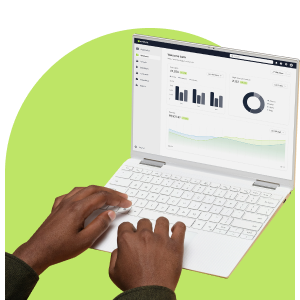A lot has happened at Everlytic and this page is now outdated.
For updated features please click here.
The last few months have been very busy for Everlytic and I’m sure you’ve noticed some hefty changes in the system. We’ve rolled out a new-look Imports interface, finished updating our email reports and put the finishing touches on the email composition workflow, including the new email coder. Let’s take a closer look at these changes and see how they’ll affect you.
Importing Contacts
Importing Contacts is our second most used function, after the email composer, and we want to make it as easy to use as possible. With this in mind, we’ve updated the contact imports interface with a cleaner look, improved workflow and blazing speed improvements.
You still have three options for the source of your data:
- Your Computer: We support a variety of file formats including .txt, .csv, .xlsx and .xls files, which means you can upload directly from Microsoft Excel or other text formats.
- A Server: Instead of doing API integrations, you can import directly from an FTP or HTTP location.
- Online Service: We now integrate directly with popular online services like Magento, Google, Salesforce, Shopify, and Snapbill.
The import is now a background process, so once you start the import, you can move on to other work and the system will email you when your import is finished.
If you’d like more details on these changes, please see our Importing Contacts documentation.
Email Composition
Our most substantial change this month is improvements to the Email Composition process. We’ve introduced the Email Coder, a code editor, into the workflow so advanced users can edit templates using HTML or CSS instead of the WYSIWYG editor. We designed it with professional agencies and developers in mind. It will take your code as-is and send the newsletter without making changes.
We’ve also included handy tools to help save time while using the Coder:
- Code snippets for inserting common code elements.
- One-click personalisation fields.
- Controls that allow design-view editing of content.
Read our help article for more info on the coder.
Our email composer has seen many changes this month. We’ve updated the campaign management and composition process. The workflow now accommodates features like the campaign manager.
We’ve added a wide range of new email templates for holidays and special occasions. You can also import a message as a .ZIP or from a website using the Import from URL function.
One big change: you can now create segments while choosing email lists, without needing to set up a filter beforehand.
For a step-by-step guide through the composer changes, please see our help articles.
SMS on Bounce
We know keeping email addresses up-to-date is a challenge. We’ve added the SMS on Bounce feature to help.
If enabled, the system will automatically send an SMS to contacts whose emails bounce (if we have their number). They’ll be invited to reply with a correct address, which the system will then update.
You’ll also find a new report showing which bounce SMSs were sent and whether a reply was received.
Email Reports
We’ve fully implemented our new Email Reports interface. Reports now tie data together better and make room for upcoming improvements.
Our articles on Email Reports provide full details of all the new metrics and changes.
To learn more, read the release notes from versions 6.7 to 6.10.
Help Documentation
Our online help documentation has been fully revised. We want it to be as easy as possible to find info for sending effective campaigns.
Changes include a new navigation bar that mirrors the in-app layout, rewritten up-to-date articles, and a new Resources page for topics like responsive design and best practices.
We’re also overhauling our API docs to give developers an easier integration experience.
New Order and Upgrade Process
We’ve improved the workflow for account upgrades and top-ups. You’ll now see usage stats and clear options for upgrading your full package or just buying top-up credits.



